Tips of the Trade
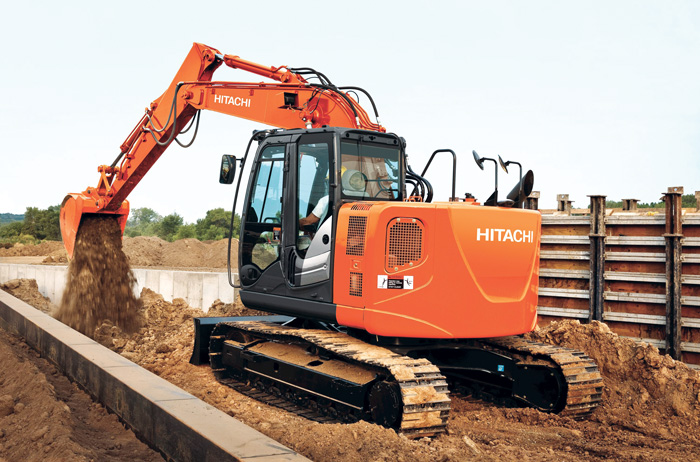 John Deere and Hitachi
John Deere and Hitachi
Michael Boyle, Construction & Forestry Products Consultants Manager
Buying Advice: When you are checking competitive excavator specs, make sure you are comparing apples to apples. Manufacturers will publish lift capacities with or without a bucket. If you are comparing excavators, the excavator with no bucket weight will have a lopsided view in lift capacity as opposed to the excavator that has a bucket. Reading the fine print is important.
Safety Tip: Operator safety is a concern of every manufacturer and that’s why most manufacturers have items in place to help educate operators about safety issues. These include things like videos, AEM safety manuals, posters and decals, equipment safety checklists, excavator simulators, self-study guides and, of course, operator training classes.
Favorite Units:
John Deere: For contractors looking for more productivity in a mid-size package, the 180G LC is the answer. The 180, which weighs 44,317 lbs, offers farther reach, deeper digging depth, additional lift capacity and more arm and bucket dig force. The cab is spacious and comfortable and comes equipped with an easy-to-navigate enhanced LCD monitor that lets operators easily dial-in a wealth of machine info and functionality. The rugged Tier 4 Interim (Tier 4i) engine meets rigid emissions regulations, enabling you to work wherever there’s work — even in nonattainment areas.
Hitachi: The ZX135US-5 delivers power, precision and ease of operation in an easy-to-maneuver package. Its reduced tail swing design gives operators the freedom to focus on work rather than worry about counterweight overhang. Three work modes let operators choose the digging style that best fits the job. And when the digging gets tough, the power-boost button provides instantaneous extra lifting power. The Isuzu engine meets Tier 4i emissions regulations, making jobs more profitable. The ZX135US-5 can come with rubber pads and has a backfill blade option that can be used for backfilling, stability or deeper digging depth.
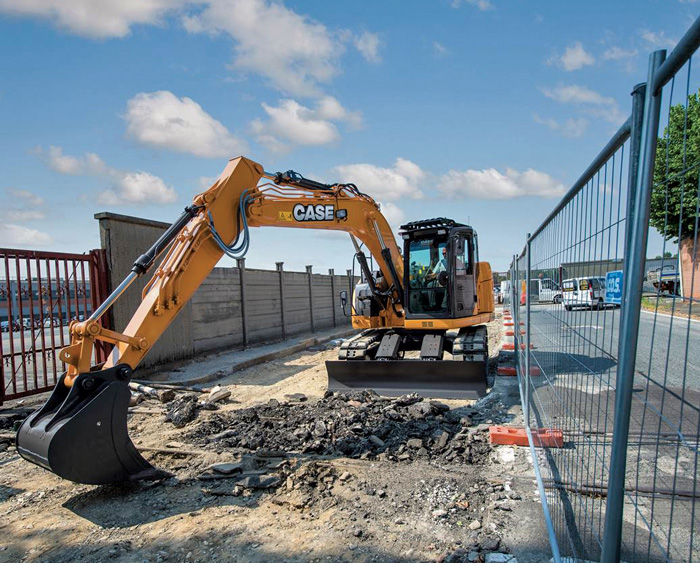 Case Construction Equipment
Case Construction Equipment
Rob Marringa, Brand Marketing Manager
Market Insight: We’re cautiously optimistic and taking a wait-and-see approach with 2014 to see the levels of investment in infrastructure. There are a variety of projects associated with excavators and the utility business in general. We are seeing increased sales across all machine styles [compact excavators, minimum tail swing excavators, conventional machines] based on the broad scope of these projects.
Safety Tip: Take time to walk around and understand the jobsite before jumping into the excavator. Take note of surrounding structures, overhead utilities and marked underground utilities. Do a check of the machine to make sure that everything appears to be in working order and that there aren’t any hazards present or obvious maintenance issues from the previous day or shift.
Favorite Unit: My current favorite for the utility market is the CX145C SR, a new minimum swing radius excavator from Case. These excavators deliver almost the same level of performance as their conventional counterparts, but they do so in a footprint and package that offers the customer greater versatility. The CX145 CSR operates well in close-quarter applications such as along single-lane roads and directly next to buildings. The machines also feature a significant fuel savings (9.2 percent) over the model they replace. We’ve also increased its operating weight by 3,659 lbs and boosted hydraulic performance to significantly improve lift capacity and speed compared to its predecessor.
 Hyundai Construction Equipment Americas
Hyundai Construction Equipment Americas
Shane Sirmons, Marketing Manager
Market Insight: At the beginning of 2013, economic forecasters predicted a modest recovery in the commercial and industrial construction industry. The Associated Builders and Contractors forecasted that nonresidential construction will expand 5.2 percent in 2013. Some forecasters predicted even bigger leaps on the residential side. The National Association of Home Builders said total housing production will increase by 20 percent in 2013 over 2012 levels. All of this new construction requires utility contracting, plus funds have become available to update or replace aging infrastructure. From the manufacturing perspective, we know that excavators play an important role in utility construction, and we are starting to see increased demand for these machines.
Buying Advice: When procuring an excavator in the utility construction sector, you need a machine that is versatile enough to handle different project types. In particular, the excavator needs to handle various attachments such as hydraulic hammers for breaking concrete, hydraulic augers for digging and plate compactor attachments for trench compaction. These attachments are crucial to utility construction, so the excavator should have enough power and durability to have multiple attachments.
Favorite Unit: Hyundai’s 145LCR-9 compact radius excavator is ideal for light excavating and utility work. Powered by a 113-hp Mitsubishi engine, it provides a digging force of 19,620 lbf and maximum dig depth of 16.9 ft. The tail swing radius is a tight 4.1 ft and dozer blades are optional. Hyundai has loaded the 145LCR-9 with many features and benefits that come standard. Hyundai’s 7-in. wide color LCD screen Cluster with toggle switch lets the operator choose personal machine preferences and work modes, self-diagnostics, maintenance checklists and machine security. Hi-mate, Hyundai’s proprietary remote management system, gives operators and dealers vital information on the machine from any computer with Internet access.
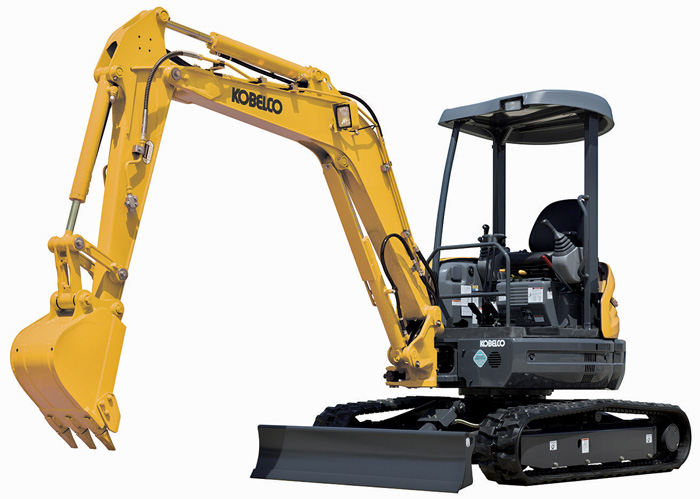 Kobelco
Kobelco
George Lumpkins, Product Marketing Manager
Attachment Advice: Users should realize the importance of bucket selection to each job they are working on. It is important to ensure that the bucket being used is the one that is best suited for the work at hand. A bigger bucket may move more material but it will also slow the machine down in the process. Similarly, quick couplers may allow for operators to more easily change buckets, however digging force will ultimately be sacrificed.
Safety Tip: When it comes to safety, it is of extreme importance that the equipment operator has read and fully understands the machine’s operator manual and keeps it in the cab to reference as needed. The same should also apply to all optional attachments, such as couplers. It is essential that operators are familiar with each and every piece of equipment they are using.
Favorite Unit: The ED160 Blade Runner combines two machines in one — a dozer and an excavator — giving operators a competitive edge. Unlike most excavators, this 92.8-hp, 37,000-lb model is equipped with more than just a backfill blade, but a six-way power-tilt blade with float, tilt, lift and angle options. Designed for heavy dozing, the ED160 has a rugged, oversized undercarriage for excellent durability and performance as well as curved track pads for optimal traction and higher flotation. In addition to dozing, the ED160 has a .65-cu yd bucket, a 19,000-lb digging force and a zero tail swing radius — making it ideal for digging, even in tight spaces.
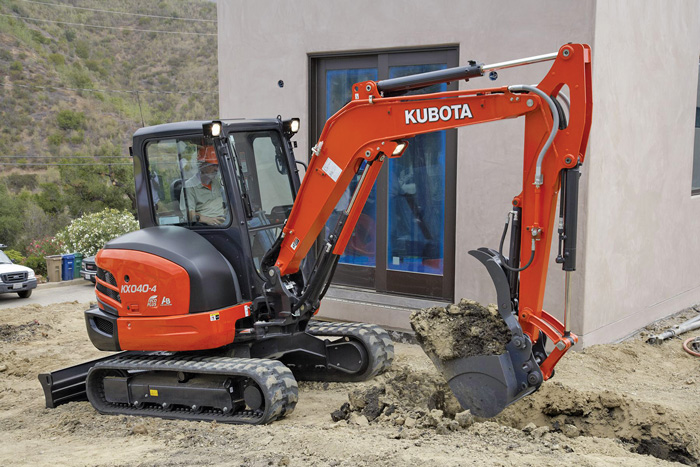 Kubota
Kubota
Keith Rohrbacker, Product Manager
Market Insights: The utility construction market segment is Kubota’s fourth most popular customer application. Using sales to this segment as an indicator, demand is increasing but at an uneven pace. Customers tell us that there are jobs available, but the irregular pace of housing starts and the reduction in infrastructure funding have placed limits on future opportunities. We are all looking forward to 2014 and hopefully a more steady improvement in infrastructure spending and housing starts.
Buying Advice: Consider the reliability and durability of the brand of machine you are purchasing. The dealer should be an authorized compact excavator dealer and be able to fulfill all of your service and parts needs in a timely manner.
Favorite Unit: The Kubota KX040-4 is the newest in Kubota’s most popular series. The 4-ton KX040-4 packs performance, versatility and comfort into one compact machine. The KX040-4 replaces the KX121-3 and prioritizes the economy while supporting the environment with its “Eco Plus” system, giving operators the option of “eco mode” for up to 20 percent less fuel consumption than the prior model. The KX040-4 features a deluxe interior that rivals larger models with a spacious air-conditioned cab, wide entrance, fully flat floor, deluxe suspension seat and an easy access, up-front control panel. The KX040-4 also boasts auto downshift travel motors, which shift automatically to improve productivity. Consider an optional angle dozer blade or an optional six-way dozer blade to improve your backfilling efficiency and improve productivity.
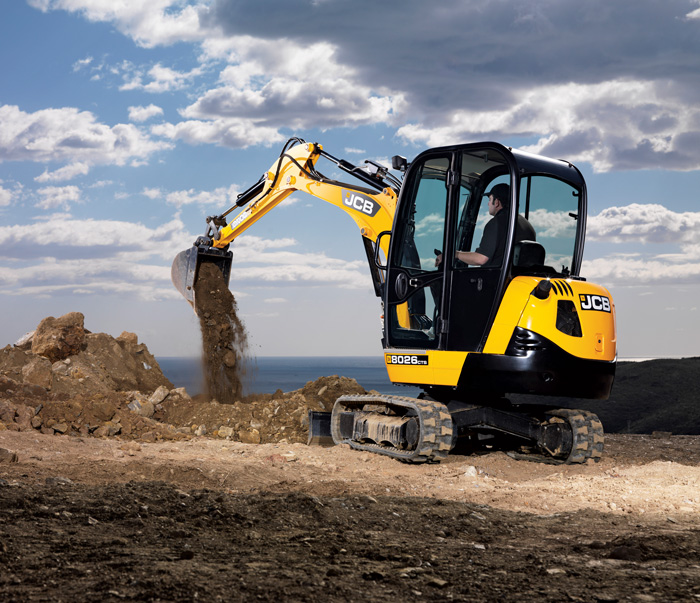 JCB
JCB
Vincent Whelan, Product Sales Manager of Compact Excavators
Market Insight: The market is trending to remain flat for 2013 with the rental sector continuing to be strong. Utility construction will enjoy a strong end to 2013 as monies for infrastructure re-build and urban projects are finally released; this will continue into 2014. With around 36 percent of the total compact excavator market going into utility construction, the sector is a key driver in the design of the compact excavator especially in the 2.5- to 4.5-metric ton range. The general populace’s demand for instant communication is driving utility “last mile” type projects, and that, mixed with an aged infrastructure from sewers to overpasses, bridges and road networks, means that there are good times ahead for the utility contractor.
Safety Tip: Safety must be the first thing in every contractor’s mind, if you work in or around our industry. This also applies to the manufacturers of the machines that they use. The very nature of what utility contractors do and where they work means that the proximity to the general population and coworkers is often in very tight spatial conditions. To this end, visibility is paramount and elimination of all blind spots allows the operator to see his environment and keep it safe.
Favorite Unit: The 8026CTS is a 2.7-ton conventional tail swing excavator, which now sits alongside the JCB 8025 zero tail swing excavator. The 8026 is even more efficient than the 8025, due to the lower power rating of the three-cylinder, 24-hp engine, and it delivers an 8 percent efficiency gain, driving a ‘Nachi’ variable displacement hydraulic pump. The 8026 has a lower center of gravity, and with its conventional tail swing design delivers outstanding lift capacity and excellent stability, while offering better productivity, versatility and operator confidence.




